#11: Gaia Flight Model Mass Properties Testing
17 June 2013
The Gaia Spacecraft Flight Model has successfully completed its mass properties test campaign.The mass properties of a spacecraft (total mass, centre of gravity [CoG] and moment of inertia [MoI] about all three axes) are among the characteristics calculated during the design process. Since the correct control and guidance of the spacecraft depend on an accurate knowledge of these values, they are subsequently measured as part of the test campaign. The integrated Gaia Flight Model (FM) spacecraft has completed its mass properties test campaign at the premises of Intespace in Toulouse, France.
Measurement of the mass ensures that the completed spacecraft has a total mass that is within the design tolerances. This value is important for the launch, spin-up and injection into the transfer orbit to reach the operational orbit at the second Lagrange point of the Sun-Earth system (L2). A weighing scale was used to determine the spacecraft's mass with an accuracy of 0.4 kg.
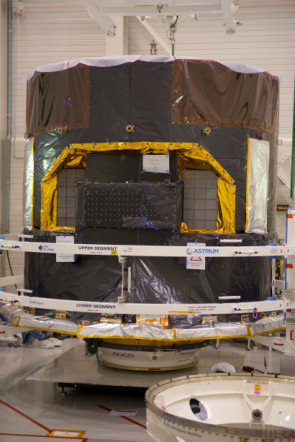 |
 |
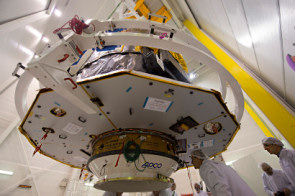 |
 |
|
Top left: Gaia spacecraft on the weighing scale for total mass measurement. Top right, lower left and lower right: Gaia spacecraft being lifted from the weighing scale. |
|
Determining the location of the CoG of the spacecraft confirms that it is located within the design tolerances. Knowledge of the CoG position is important because it dictates how the spacecraft will behave when the sets of chemical and micropropulsion thrusters are fired asymmetrically, to rotate the spacecraft, rather than symmetrically, to change velocity. The CoG position was determined to approximately 2 mm for the X-axis, and approximately 0.35 mm for the Y and Z axes.
Measuring the MoI about each of the spacecraft's axes and deriving the Products of Inertia (PoI) is performed so that its 'resistance' to rotation about any axis is available for refining the algorithms that the Attitude and Orbit Control System (AOCS) uses to control the spacecraft's orientation by firing the chemical or micropropulsion thrusters. The MoI about the X-axis was determined with an accuracy of better than 10 kg m², and better than 30 kg m² for the Y and Z axes.
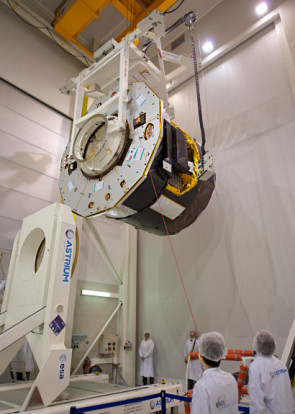 |
 |
 |
|
|
The Gaia spacecraft being lifted from its ground handling trolley, which was used to rotate the spacecraft through 90° ready for testing in a horizontal position. Credit: ESA/Stefan Corvaja |
|
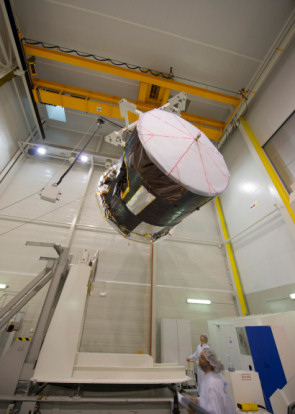 |
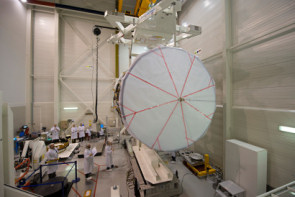 |
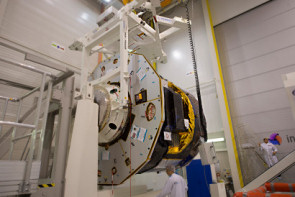 |
|
|
The Gaia spacecraft being installed on the mass properties testing equipment in a horizontal position. Credit: ESA/Stefan Corvaja |
|
About Gaia
Gaia will create a three-dimensional map of the Milky Way, in the process revealing information about its composition, formation and evolution. The mission will perform positional measurements for about one billion stars in our Galaxy and Local Group with unprecedented precision, together with radial velocity measurements for the brightest 150 million objects. Gaia is scheduled to launch in 2013 for a nominal five-year mission, with a possible one-year extension.
The spacecraft will operate in a Lissajous orbit around the second Lagrange point of the Sun-Earth system (L2). This location in space offers a very stable thermal environment, very high observing efficiency (since the Sun, Earth and Moon are all behind the instrument FoV) and a low radiation environment. Uninterrupted mapping of the sky will take place during the operational mission phase.
The Prime Contractor for Gaia is Astrium SAS, based in Toulouse, France.














